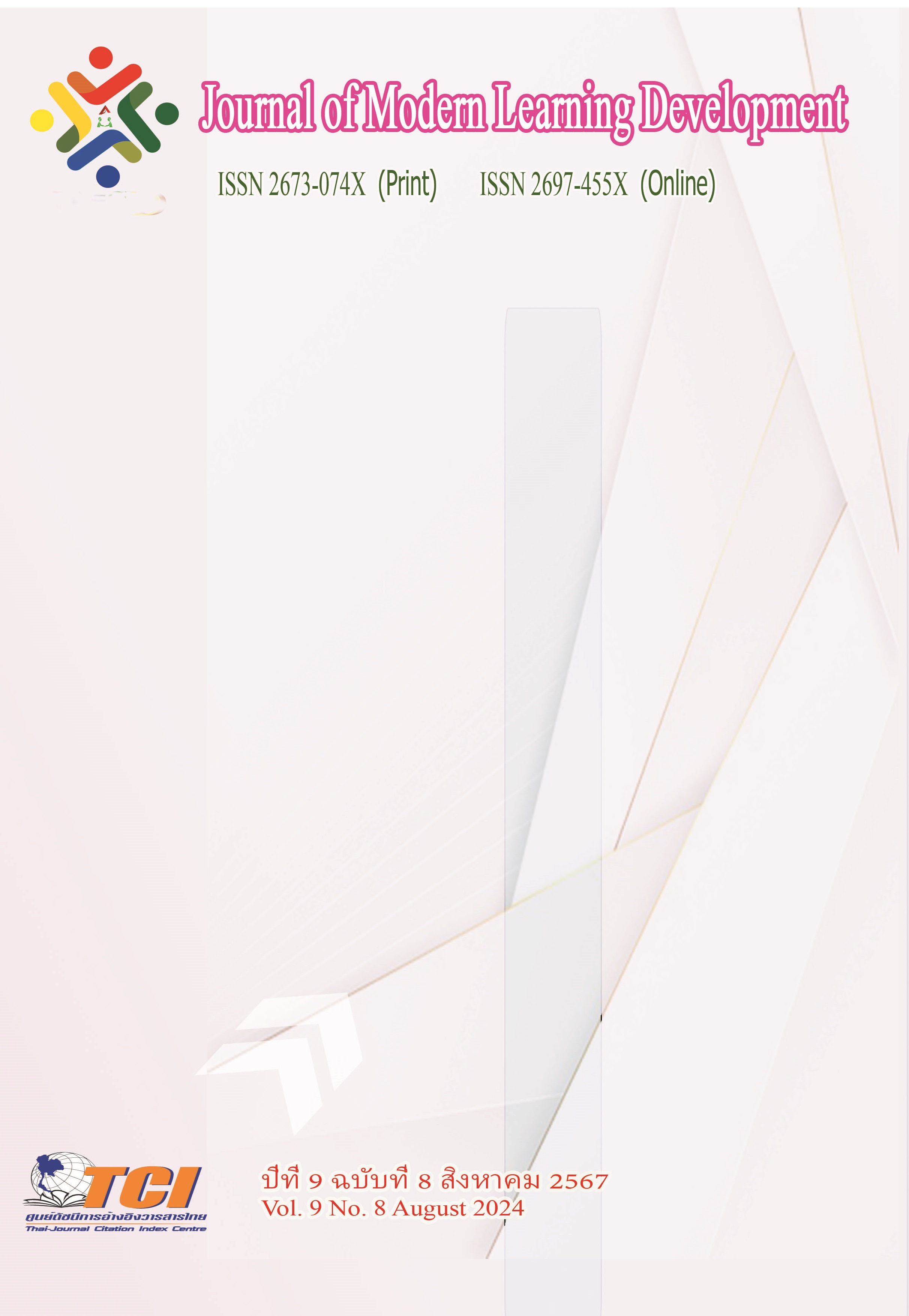The Model of Development for Leadership of Association for Nursing Student in Universities Under Henan Province
Main Article Content
Abstract
The objectives of this research were: (1) To explore the components and variables of the model of nursing student cadres leadership development in universities under Henan Province.(2) To propose the guideline of the model of nursing student cadres leadership development in universities under Henan Province.The research was a mixed methodology research, including quantitative research and qualitative research. The survey included 328 nursing student leaders from 13 colleges. A stratified sampling method was adopted for 2272 nursing student cadres. The tools used for data collection included semi-structured interviews, five-level rating scale questionnaires, and focus group discussion records. Descriptive statistics, ,S.D.exploratory factor analysis and content analysis were used for data analysis.
The results show that: (1)The leadership model of nursing student cadres in Henan Province is composed of the following five component:ideology;Character style; Communication and socializing; Cognitive ability; Innovative thinking;(2)There are 20 guiding principles for the guideline leadership of nursing student cadres in colleges and universities in Henan Province, including 4 guiding principles in component 1 ideology, 4 guiding principles in component 2 Character style, 4 guiding principles in component 3 Communication and socializing, 4 guiding principles in component 4 Cognitive ability, and 4 guiding principles in component 5 Innovative thinking.
Article Details
References
Bryan, V., & Vitello-Cicciu, J. (2022). Perceptions of preceptors' authentic leadership and final year nursing students' self-efficacy, job satisfaction, and job performance. Journal of professional nursing : official journal of the American Association of Colleges of Nursing, 41, 81–87.https://doi.org /10 .101 6/j.prof nurs. 2022.04.003
Colley S. L. (2019). Voices of Quiet Students: Introverted Nursing Students' Perceptions of Educational Experiences and Leadership Preparation. International journal of nursing education scholarship, 15 (1), /j/ijnes.2018.15.issue-1/ijnes-2018-0056/ijnes-2018-0056.xml. https://doi.org/10.1515/ijnes-2018-0056
Cooke M. (2021). Exploring Strengths of Prelicensure Nursing Students to Build Leadership Potential. Nurse educator, 46 (6), E139–E140. https://doi.org/10.1097 /NNE.00000 00000001067
Flott, E., Ball, S., Hanks, J., Minnich, M., Kirkpatrick, A., Rusch, L., Koziol, D., Laughlin, A., & Williams, J. (2022). Fostering collaborative learning and leadership through near-peer mentorship among undergraduate nursing students. Nursing forum, 57 (5), 750–755. https://doi.org/10.1111/nuf.12755
Gawlik, K. S., Jeu, G., & Reisinger, V. (2018). The I Will Help You mental health initiative: A pedagogy for nursing leadership and a call to action for nurses. Journal of professional nursing : official journal of the American Association of Colleges of Nursing, 34 (5), 364–368. https://doi.org/10.1016/j.profnurs.2017.12.010
Göktepe, N., Türkmen, E., Zeybekoğlu, Z., & Yalçin, B. (2018). Use of Team-Based Learning in a Nursing Leadership Course: An Action Research Study. Nurse educator, 43 (6), E1–E4. https://doi.org/10.1097/NNE.0000000000000500
Ha, L., & Pepin, J. (2018). Clinical nursing leadership educational intervention for first-year nursing students: A qualitative evaluation. Nurse education in practice, 32, 37–43. https://doi.org/10.1016/j.nepr.2018.07.005
Horowitz, M. L., Stone, D. S., Sibrian, J., DuPee, C., & Dang, C. (2022). An innovative approach for graduate nursing student achievement of leadership, quality, and safety competencies. Journal of professional nursing : official journal of the American Association of Colleges of Nursing, 43, 134–139. https://doi.org/10.1016/j.profn urs.2022.10.004
Hudson, E., Clavel, N., Kilpatrick, K., & Lavoie-Tremblay, M. (2021). Effective online learning strategies for leadership and policy undergraduate courses for nursing students: a rapid review. Journal of professional nursing : official journal of the American Association of Colleges of Nursing, 37 (6), 1079–1085.https://doi.o rg/1 0.101 6/j.profnurs.2021.08.012
Jefferies K. (2018). A Personal Leadership Development Plan for Black Undergraduate and Graduate Nursing Students. Nursing leadership (Toronto, Ont.), 31 (4), 57–62. https://doi.org/10.12927/cjnl.2019.25755
Jones, K., Burnett, G., Sztuba, L., & Hannon, R. (2021). Academic practice partnerships: A review of a statewide population health nursing leadership initiative. Public health nursing (Boston, Mass.), 38 (1), 64–76. https://doi.org/10.1111/phn.12833
Knight, C. C., & Hamilton, S. H. (2019). Getting Students to Value Leadership Early in the Nursing Curriculum: Innovation Makes It Possible. Nursing education perspectives, 40 (4), 254–256. https://doi.org/10.1097/01.NEP.0000000000000351
Michaels-Strasser, S., Johnston, S., Treston, C., & Kurth, A. (2018). Nursing leadership in global health: Implications for the future of nursing education, scholarship and interprofessional practice. The Journal of the Association of Nurses in AIDS Care : JANAC, 29 (5), 795–799. https://doi.org/10.1016/j.jana.2018.07.001
Newton R. H. (2020). Digital Innovation: Transition to Practice Using Apple Clips to Teach Nursing Leadership. The Journal of nursing education, 59 (5), 283–286. https://doi.org/10.3928/01484834-20200422-09
Sayers, J., Lopez, V., Howard, P. B., Escott, P., & Cleary, M. (2015). The leadership role of nurse educators in mental health nursing. Issues in mental health nursing, 36 (9), 718–724. https://doi.org/10.3109/01612840.2015.1033040
Stacciarini, J. R., & McDaniel, A. M. (2019). EMBRACE: Developing an Inclusive Leadership Program With and for Undergraduate Nursing Students. Journal of professional nursing : official journal of the American Association of Colleges of Nursing, 35 (1), 26–31. https://doi.org/10.1016/j.profnurs.2018.09.001


